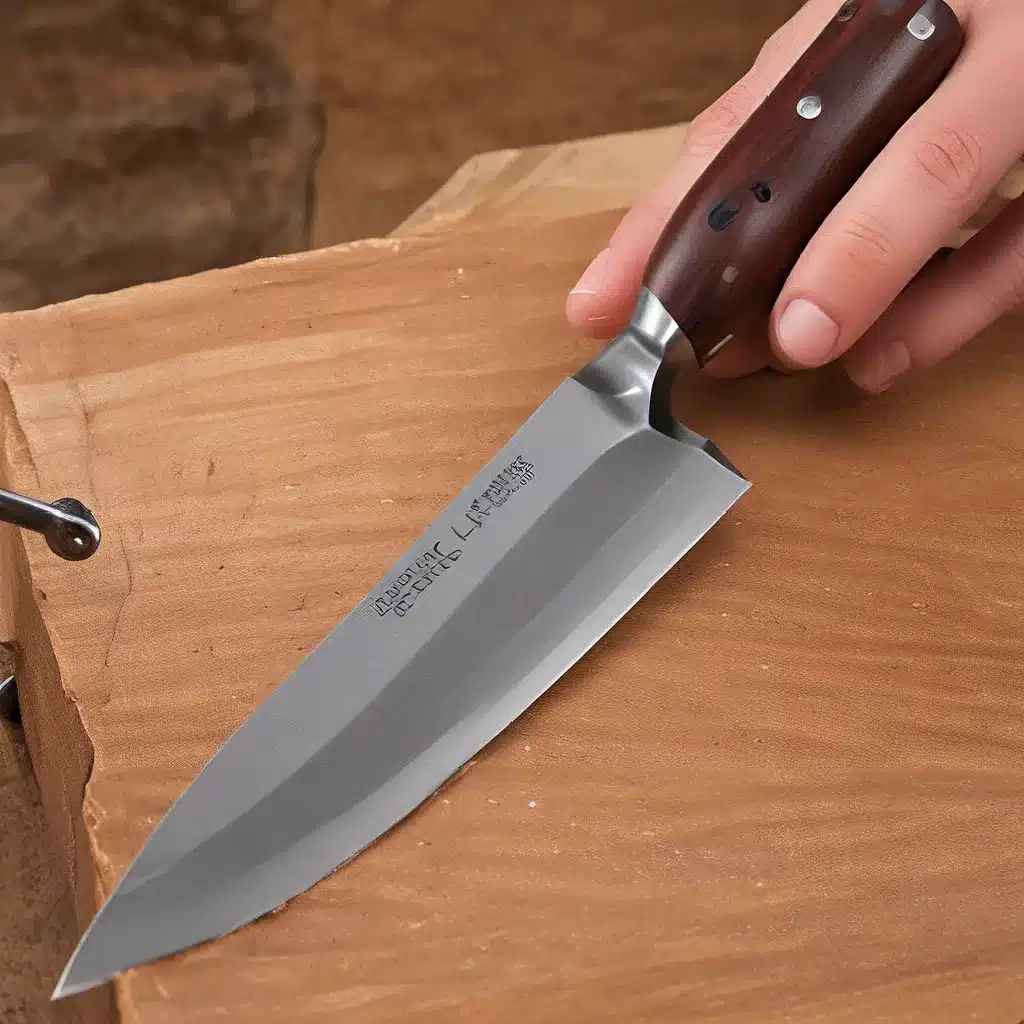
Uncovering the Mysteries of Blade Sharpness
As a lifelong knife enthusiast, I’ve always been fascinated by the pursuit of the perfect edge. It’s a quest that has taken me down a rabbit hole of sharpening techniques, metallurgy, and the science behind what makes a blade truly razor-sharp. And let me tell you, the secrets I’ve uncovered along the way are nothing short of mind-blowing.
You see, the world of knife sharpening is often shrouded in myths and misinformation. For years, I’ve heard the same tired advice – use oil, rely on natural hones, and just “feel” when the edge is right. But as I’ve discovered, those recommendations couldn’t be further from the truth.
In fact, I recently had the opportunity to chat with John Juranitch, a true master of blade sharpening. Juranitch, a former barber turned sharpening expert, has spent decades perfecting his craft and debunking the common misconceptions that plague the industry. And let me tell you, the insights he shared were nothing short of revolutionary.
The Truth About Oil and Natural Hones
One of the biggest sharpening myths, according to Juranitch, is the idea that using oil on your hone is the way to go. As he explains, “The basic problem with using oil for sharpening is that as you sharpen, grit from the hone and steel particles from the blade become suspended in the oil and form a slurry. The very fine edge you’re putting on the blade actually runs into the particles of hone suspended in the oil – it’s as though you were trying to sharpen your blade by running it through a sand pile.”
Juranitch has the proof to back up his claims, too. He recounts a time when he was called in to work with the world’s largest meatpacking company, Iowa Beef. The meat cutters there were thrilled with the edges he was creating – until the management asked him to start using oil. “It wasn’t long before the reports started coming back from the lines that the quality of the edges had dropped,” Juranitch says. “So we cleaned all the oil off the hones, and the reports suddenly got better.”
But it’s not just oil that Juranitch debunks – he’s also quick to dispel the myth of natural hones being superior to their manufactured counterparts. “Despite what you hear to the contrary,” he explains, “fine manufactured hones are far superior to the natural ones. That’s not to say that natural hones are no good – they’re just highly overrated.”
The Secret to a Razor-Sharp Edge
So, if oil and natural hones aren’t the answer, what is the secret to achieving a razor-sharp edge? According to Juranitch, it all comes down to understanding the proper sharpening technique and the critical role that edge relief plays in the process.
“The most important secret of sharpening,” Juranitch reveals, “is to focus on forming the primary-edge faces that come together to create the actual cutting edge. This is called ‘double edging’, and it’s the key to a truly fine edge.”
But before you can get to that primary edge, Juranitch stresses the importance of the first step – properly tapering the edge with a coarse hone. “This produces blade relief,” he explains, “and is the most important part of sharpening. A blade with good relief will sharpen easily to a high-quality edge, while one with poor relief will struggle.”
To achieve this, Juranitch recommends using a simple trick – fold a piece of paper in half, then fold it in half again. “This will give you a 22.5-degree angle,” he says. “Hold the blade at this angle or slightly less for your primary-edge face, and then use a finer hone to set the secondary edge at around 11 degrees.”
Mastering the Technique
Of course, getting the angles right is only half the battle. Juranitch also emphasizes the importance of technique, whether you’re using a back-and-forth or circular motion.
“Be very careful to hold the angle constant,” he advises. “If you have trouble knowing when the burr forms, check with a magnifying glass. Once you see that curl, you’ll learn to feel it with your fingernail.”
And when it comes to the final polishing on the fine hone, Juranitch has a specific recommendation. “Stroke the knife into the hone as if you were trying to slice it,” he says. “Use only light pressure, as the edge is microscopic, and pressure will distort it. Make alternate strokes on opposite sides of the blade.”
The Importance of Steeling
But Juranitch’s sharpening secrets don’t stop there. He also reveals the power of steeling for achieving a truly superior edge.
“The steeled edge has been smoothed out into an even sharper cutting edge, as though someone had wiped the frosting on a cake with the side of a knife,” he explains. “Notice that there are no primary furrows caused by the hone left in the steeled area. The metal has actually flowed back, as though it were molten. This is an edge no hone will ever equal.”
However, Juranitch cautions against over-steeling, as that can actually “ruin the edge and the blade has to be honed again.”
Putting it All Together
So, there you have it – the sharpening secrets of a true master. By following Juranitch’s advice, you’ll be well on your way to achieving a razor-sharp edge on all your knives and tools.
Remember, the key is to start with good edge relief, use a dry hone (no oil!), and focus on that primary cutting edge through proper technique and steeling. With a little practice and patience, you’ll be able to put a shave-worthy edge on even the most dull blade.
And if you’re ever in the market for a new knife, be sure to check out https://hermanknives.net/. They’ve got a great selection of high-quality blades that are just begging to be sharpened to perfection.
Happy sharpening, my fellow blade enthusiasts! May your edges be forever keen.


